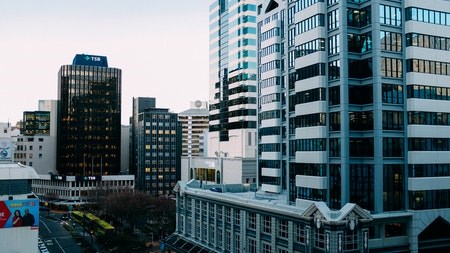In the third quarter of 2021, real GDP unexpectedly materially declined by 1.5% quarter on quarter (q/q), according to FNB Senior Economist Thanda Sithole.
This figure is seasonally adjusted but not annualised and follows downwardly revised growth of 1.1% - from 1.2% - in the second quarter of 2021.
“The out-turn was worse than our forecast of a contraction of 0.8% q/q and Bloomberg consensus prediction of a 1.0% q/q contraction,” says Sithole.
“The biggest surprise was the agricultural sector’s GDP, which contracted by 13.6% q/q relative to our forecast of 1.9% q/q growth. The quarterly GDP decline reflected the material impact of the social unrest that primarily and directly affected KwaZulu-Natal and Gauteng.
“On the other hand, mining activity’s negative contribution to the third-quarter GDP growth reflected the impact of several factors unrelated to the social unrest. During the third wave of the Covid-19 Delta variant, the level four lockdown restrictions also severely affected economic activity in contact-intensive sectors such as tourism and related industries.
“Growth in real headline GDP - not seasonally adjusted - materially moderated to 2.9% year on year (y/y). This is in line with our expectations but below the Bloomberg consensus forecast of 3.8% year on year in the third quarter of 2021 - from 19.1%, which was downwardly revised from 19.3% y/y in the second quarter of 2021. This reflects significantly diminished favourable base effects and a drop in growth momentum due to the unrest. Other influences included the Transnet cyberattack and tighter lockdown restrictions during the third wave of Covid-19 infections.”
Supply
Measured from the supply side, Sithole says, the real GDP quarterly contraction was primarily driven by the trade, catering and accommodation sector, which contracted by 5.5% q/q and shaved off 0.7 ppt from real GDP growth.
This reflected the impact of the social unrest and the third wave of Covid-19 infections, which affected contact-intensive sub-sectors of the trade sector.
The second-largest negative contribution to GDP growth emanated from the manufacturing sector, which declined by 4.2% q/q and shaved off 0.5 ppt from overall real GDP growth. According to Stats SA, the decline in manufacturing sector GDP was primarily driven by motor vehicles, parts and accessories and other transport equipment businesses.
“This arguably reflected the impact of the global shortage of semiconductors on production. But, worryingly, eight out of ten manufacturing subdivisions recorded negative growth rates in the third quarter of 2021, which is consistent with the weak PMI during that period.”
Unexpectedly, the agriculture, forestry and fishing sector declined sharply by 13.6% q/q in the same quarter and shaved off about 0.4 ppt from GDP growth.
“This was against our forecast of 1.9% q/q growth. According to Stats SA, the decline in agricultural GDP was due to reduced field crop and animal products production. GDP for the transport, storage and communication sectors declined by 2.2% q/q, shaving off 0.2 ppt. This reflected reduced activity for land and air transport,” says Sithole.
Limiting the decline in overall GDP was the finance, real estate and business services (FREBS) sector which unexpected grew by 1.2% q/q in the third quarter of 2021, contributing 0.3 ppt. According to Stats SA, growth in the FREBS sector was supported by increased financial intermediation, auxiliary activities and business services.
However, this was not enough to counteract the deep contractions from the other sectors.
Demand
Measured from the demand side, real GDP quarterly contraction was led by actual household consumption expenditure, which declined by 2.4% q/q, shaving off 1.6 ppt from GDP.
“Within household consumption, the largest decline was recorded by the durables category, which declined by 9.3% q/q, followed by non-durables which contracted by 3.1% q/q,” says Sithole.
“Together, these categories shaved off 2.0 ppt from GDP. Semi-durables contracted by 5.2% q/q, while growth in services consumption was flat at 0.0% q/q. Household consumption declined despite nominal compensation of employees - labour income, not seasonally adjusted - growth of 7.4% q/q in the third quarter of 2021 from 14.2% q/q in the second quarter.
“The uncertainty created by the sharp 571 000 q/q decline in the third quarter formal sector employment as well as the third wave Covid-19 restrictions likely limited consumption expenditure in the third quarter.”
Exports and imports
Sithole says that growth in gross fixed capital formation (GFCF) was flat at 0.0% q/q in the third quarter of 2021 following growth of 1.2% q/q in the second quarter.
“This reflected a 1.2% q/q decline in private business enterprises GFCF and a 0.9% q/q decline in government GFCF. Meanwhile, public corporations GFCF grew by 9.5% q/q after contracting by 11.1% q/q in the second quarter of 2021.
“The rate of inventory drawdowns significantly slowed in the third quarter to R915 million - from R36.9 billion in the second quarter. The limited drawdowns in the third quarter reflected the reductions in the manufacturing and trade sectors.
“Exports of goods and services declined by 5.9% q/q in the third quarter of 2021, following growth of 3.5% q/q in the second quarter. Imports of goods and services declined mildly by 2.8% q/q following 0.0% growth in the second quarter of 2021. “Annual growth in exports was 3.7% y/y while imports grew by 14.5% y/y. Subsequently, real net exports measured R475 million compared to R38.6 billion in the second quarter of 2021.
Outlook
Despite the disappointing GDP data from the third quarter of 2021, FNB’s growth forecast of 4.7% for 2022 implies a reasonably solid growth rebound from last year’s 6.4% GDP deep decline.
Seasonally adjusted GDP is about 2.9% below the pre-pandemic level in the fourth quarter of 2019. Although the recovery is uneven and not broad-based across all sectors, Sithole says GDP should reach the pre-pandemic level in the third quarter of 2022.
However, near-term headwinds to the economic outlook include the Covid-19 Omicron resurgence, unreliable electricity supply, rising prices - including fuel - and the ongoing shortage of critical raw and other input materials.
“The interest rate hike in November 2021 and its projected path imply that the extreme benefits from historically low-interest rates are waning. Accordingly, the SA Reserve Bank’s Monetary Policy Committee is expected to remain cautious in balancing inflation expectations and growth outcomes,” says Sithole.
“Beyond 2021, growth will moderate and will largely depend on the trajectory of the pandemic, the pace of vaccination and accelerated growth-enhancing policy interventions, some of which are articulated in the Economic Recovery and Reconstruction Plan. The availability of stable electricity supply will also be critical for growth over the medium term.”



